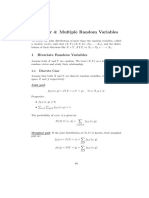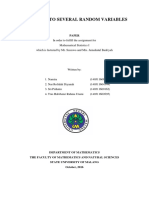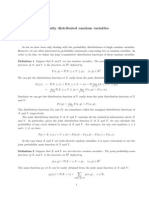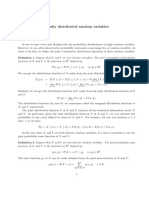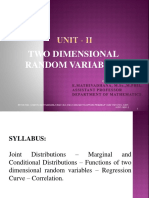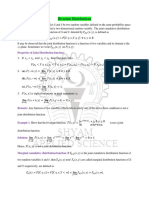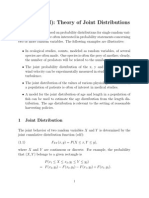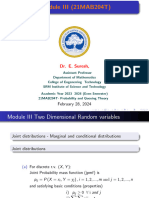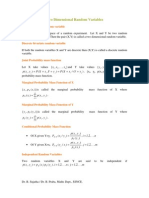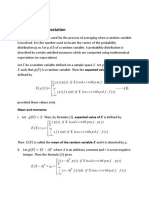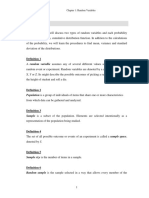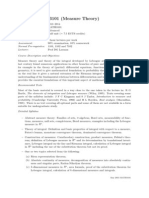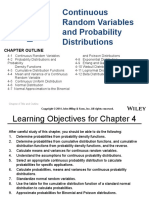0% found this document useful (0 votes)
24 views11 pagesSupportive Notes & QB-Distribution Theory-PS-Unit2
The document provides comprehensive notes on bivariate discrete and continuous distributions, defining two-dimensional random variables and their joint probability functions. It covers marginal and conditional probability functions, joint distribution functions, moments, and moment-generating functions, along with their properties and relationships. Key concepts such as conditional expectation and variance, as well as independence criteria for random variables, are also discussed.
Uploaded by
singhadi348Copyright
© © All Rights Reserved
We take content rights seriously. If you suspect this is your content, claim it here.
Available Formats
Download as PDF, TXT or read online on Scribd
0% found this document useful (0 votes)
24 views11 pagesSupportive Notes & QB-Distribution Theory-PS-Unit2
The document provides comprehensive notes on bivariate discrete and continuous distributions, defining two-dimensional random variables and their joint probability functions. It covers marginal and conditional probability functions, joint distribution functions, moments, and moment-generating functions, along with their properties and relationships. Key concepts such as conditional expectation and variance, as well as independence criteria for random variables, are also discussed.
Uploaded by
singhadi348Copyright
© © All Rights Reserved
We take content rights seriously. If you suspect this is your content, claim it here.
Available Formats
Download as PDF, TXT or read online on Scribd
/ 11
